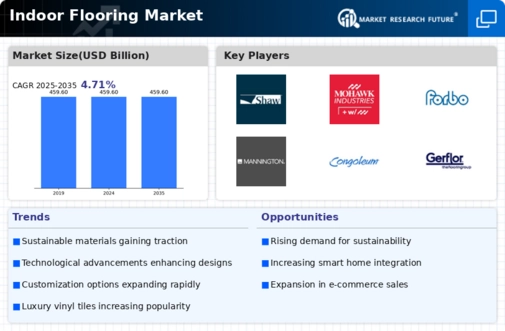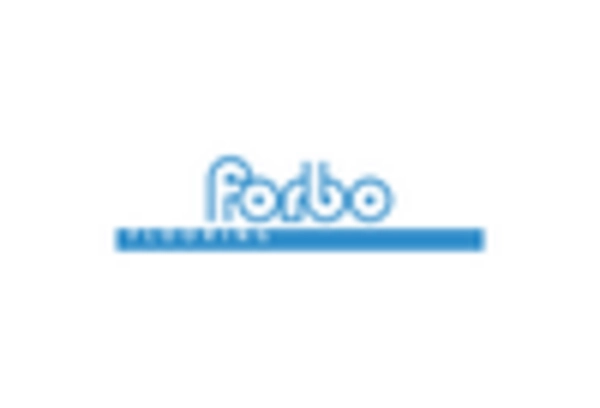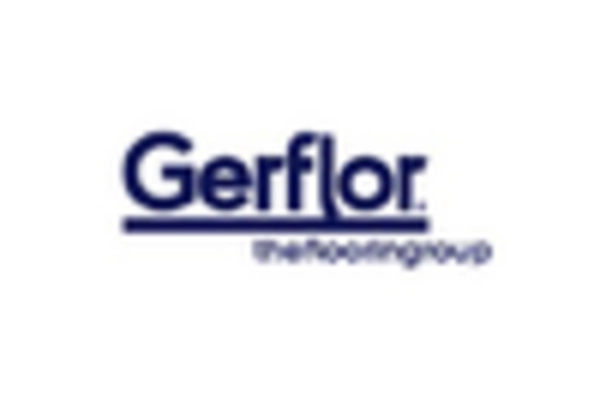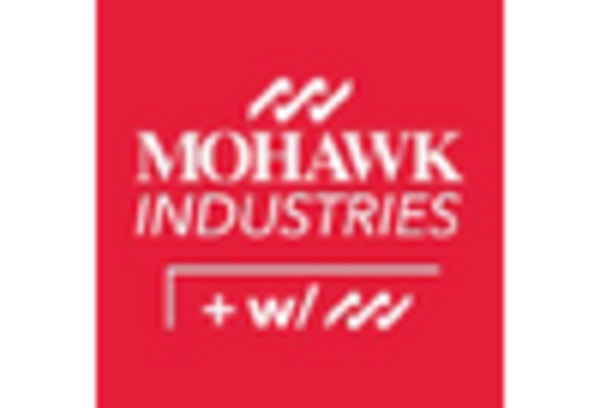Urbanization Trends
Urbanization trends are significantly impacting the Indoor Flooring Market. As more people migrate to urban areas, the demand for residential and commercial spaces is on the rise. This urban expansion necessitates the development of new buildings and renovations of existing structures, thereby increasing the need for various flooring solutions. The market is particularly witnessing a surge in demand for space-efficient and multifunctional flooring options that cater to the needs of urban dwellers. Additionally, urban areas often have higher disposable incomes, which can lead to increased spending on premium flooring materials. This trend suggests that the Indoor Flooring Market may experience robust growth as urbanization continues to shape consumer preferences and purchasing behaviors.
Sustainability Initiatives
The Indoor Flooring Market is increasingly influenced by sustainability initiatives. Consumers are becoming more environmentally conscious, leading to a rising demand for eco-friendly flooring options. Products made from renewable resources, such as bamboo and cork, are gaining traction. Additionally, manufacturers are focusing on reducing their carbon footprint by utilizing sustainable production methods. According to recent data, the market for sustainable flooring is projected to grow at a compound annual growth rate of 6.5% over the next five years. This shift towards sustainability not only appeals to environmentally aware consumers but also aligns with regulatory pressures aimed at reducing environmental impact. As a result, companies that prioritize sustainable practices are likely to gain a competitive edge in the Indoor Flooring Market.
Technological Advancements
Technological advancements are reshaping the Indoor Flooring Market in various ways. Innovations such as smart flooring systems, which integrate sensors and connectivity, are becoming more prevalent. These systems can monitor foot traffic, temperature, and even air quality, providing valuable data for both residential and commercial applications. Furthermore, advancements in manufacturing processes, such as digital printing and 3D technology, allow for greater customization and design flexibility. The market is witnessing a surge in demand for high-performance flooring materials that offer durability and aesthetic appeal. As technology continues to evolve, it is expected that the Indoor Flooring Market will see an increase in the adoption of these advanced solutions, potentially leading to a market growth rate of 5% annually.
Health and Wellness Awareness
Health and wellness awareness is becoming a pivotal driver in the Indoor Flooring Market. Consumers are increasingly seeking flooring solutions that promote better indoor air quality and overall well-being. Flooring materials that are hypoallergenic, easy to clean, and free from harmful chemicals are gaining popularity. This trend is particularly evident in residential settings, where families prioritize health-conscious choices. Moreover, commercial spaces, such as healthcare facilities and schools, are also adopting flooring solutions that contribute to a healthier environment. The market for health-oriented flooring is expected to expand, with estimates suggesting a growth rate of 4.5% over the next few years. As awareness of health impacts continues to rise, the Indoor Flooring Market is likely to adapt to meet these evolving consumer demands.
Economic Growth and Construction Activity
Economic growth and construction activity are crucial drivers of the Indoor Flooring Market. As economies recover and expand, there is a corresponding increase in construction projects, both residential and commercial. This growth leads to heightened demand for various flooring materials, from hardwood to luxury vinyl tiles. According to recent statistics, the construction sector is projected to grow by 3.8% annually, which directly influences the flooring market. Additionally, government initiatives aimed at boosting infrastructure development further stimulate demand for flooring solutions. As construction activity intensifies, the Indoor Flooring Market is poised to benefit from increased investments and consumer spending in the sector.


















Leave a Comment